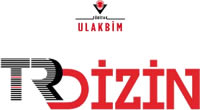Gönderiler
Başvuru sürecünde yazarlar başvurularının aşağıdaki listedeki tüm maddelere uyduğunu kontrol etmelidirler, bu rehbere uymayan başvurular yazarlara geri döndürülecektir.
- Gönderilen yazı daha önceden yayınlanmamış ve yayımlanmak üzere herhangi bir dergiye değerlendirilmek üzere sunulmamıştır (Yazar Rehberi'nde detaylı açıklama verimiştir).
- Gönderi dosyası OpenOffice, Microsoft Word, RTF veya WordPerfect dokümanı dosyası biçimindedir.
- Burada mevcut başvurular için URL'ler sağlanmıştır.
- Metin tek satırlı, 10 punto, altı çizilme yerine italik olarak vurgulanmış (geçerli URL adresleri ile) ve tüm şekil, resim ve tablolar sayfa sonu yerien metin içinde uygun noktalara yerleştirilmiştir. Baskı için, resimlerin kaliteli kopyalarını ek dosya olarak gönderiniz. Gönderilen dosyanın boyutu çok fazla olur ise, sistem almayabilir. Böyle durumlarda yazıyı bölüp, diğer bölümleri ek dosya olarak tek, tek gönderebilirsiniz.
- Buraya eklenen sitil ve bibliyografk gereksinimler Dergi Hakkında kısmındaki Yazar Rehberi'nden görülebilir.
- Yazarlar Telif Devir Formunu İndirip Doldurarak ve imzalayarak sistemi üzerinden göndermelidir. Telif Devir Formunu İndirmek için Tıklayınız.
- Linkteki kapak dosyası indirilerek doldurulup sisteme yüklemelidir. İndirmek için tıklayınız.
Telif Hakkı Düzenlemesi
Sorumlu yazar olarak;
* sunulan makalenin yazarlara ait orijinal çalışma olduğunu,
* tüm yazarların bu makaleye katkı sağladığını ve her türlü sorumluluğu aldığını,
* tüm yazarların makaleyle ilgili bütün mali haklarını “Anadolu Kültürel Araştırmalar Dergisi (ANKAD)” ne devretmesi ve bu formda belirtilen taahhütlerin yerine getirilmesiyle ilgili olarak yetkili olduğumu,
* mali hak devri ve taahhütlerin yerine getirilmesiyle ilgili doğacak tüm anlaşmazlıklardan sorumlu olacağımı,
* tüm yazarların makalenin basılacak halini gördüklerini ve kabul ettiklerini,
* tüm yazarlarla ilgili her türlü iletişim bilgisinin doğru verildiğini,
* sunulan makalenin başka bir yerde basılmadığını veya basılmak için gönderilmediğini,
* sunulan makalede yer alan yazı, şekil ve tabloların hiç kimsenin telif hakkını ihlal etmediğini,
*Araştırma ve yayın etiği kurallarına uyduğumuzu,
* sunulan makale üzerindeki mali hakları, birleştirme, işleme, yeniden şekillendirme, çoğaltma, temsil, basım, yayım, dağıtım, İnternet ve diğer her türlü yolla iletim haklarını “Anadolu Kültürel Araştırmalar Dergisi(ANKAD)” dergisi yetkili makamlarınca sınırsız olarak kullanılmak üzere devretmeyi tüm yazarlar adına kabul ve taahhüt ederim.
|
İşlem |
Süre |
Sorumlu |
|
|
Ön Değerlendirme |
15 Gün |
Baş Editör |
Makaleler dergi yazım kuralları açısından ve dergi kapsamına göre incelemeye tutulur. |
|
Editör Değerlendirmesi |
10 Gün |
Alan Editörü |
Alana uygun hakemleri atar. |
|
Hakemin çağrıyı kabul etme süresi |
10 gün |
Hakem |
Bu süreler hakemlerin cevap verme süresine göre değişiklik gösterebilir. Hakemler gerekli süre içiresinde dönüş yapmazlar ise başka hakem atanır. Hakemler ve Yazarlar gerekli süre içerisinde dönüş yapmazlar ise, bu süreler uzayabilir. |
|
Hakemin Değerlendirmeyi Tamamlama Süresi |
28 Gün |
Hakem |
|
|
Yazardan İstenen Düzeltmenin tamamlanma süresi |
30 Gün |
Yazar |
|
|
Son Değerlendirme |
15 Gün |
Alan Editörü |
|
|
Makalenin Kabul Edilen Sayfasında |
10 Gün |
Sekreterya |












